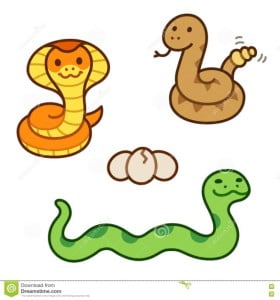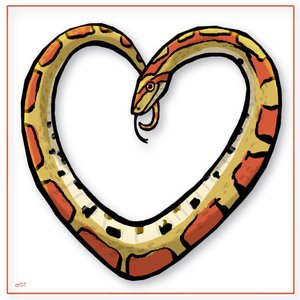Snakes bite. Well, so do shoes.
Snakes have a rather startling hiss. Same applies to a pressure cooker indicating that your favorite biryani is cooked.
The scales of a snake are ‘Eew! So slimy!’ By the same logic, shouldn’t nicely set blackcurrant jelly be discarded – as yucky?
Snakes pose a threat to one’s safety. As if the electricity in our sockets, flame in our stoves, and the kitchen knife are any less harmful (More so, if truth be told)!
As we gradually cut into the dense fog of misconceptions, myths, and fears shrouding these fascinating beings – Snakes, we can perhaps match a parallel from our daily life to every one of their characteristics.
Why then don’t we jump at the thought of conserving snakes, as we might go at a shopping spree for new shoes? Or why isn’t the scenario of coexisting with a snake as welcome as a plate of steaming biryani? Ever tried acquainting yourself with the beautiful world of these slithery beings, as you might aspire to perfect, just the right jelly recipe?
If you find yourself answering the above questions with a resounding NO, stating that it isn’t their morphological and behavioral characteristics (some real, most perceived) in silos, but rather, the combination which has you bringing down the gavel in the verdict against these fragile beings, then please take note – snakes play just as crucial a role in balancing the ecosystem (of which humans are very much a part) as do your essential amenities of electricity, warmth etc. to facilitate your everyday wellbeing.
That said, why are we so given to loathing and fearing snakes, our evolutionary contemporaries?
Are snakes such beastly beings that they evoke and instill sheer dread at their very wake?
Then please take note that it’s also been said – ‘Beauty lies in the eyes of the beholder!’
Is it that we are ‘Genetically engineered’ to fear snakes?
If yes, why aren’t babies instinctively scared on encountering images of snakes, as studies have shown?
Let’s dig deeper beyond our pre-conceived notions and resulting apprehensions about snakes, and turn to sound reasoning in our quest to unravel our fear of these fascinating beings.
A research by leading developmental psychologist Vanessa Lo Bue and et al has revealed that just because the fear of snakes is almost universal, it needn’t necessarily mean that it is innate.
Based on experiments involving very young children, some of the salient features of this research are:
1) Babies are not born with a fear of threats in general.
In other words, environmental conditioning has a major influence in our developing and manifesting fear.
2) Humans have a perceptual bias resulting in their quick detection of evolutionarily relevant threats – in this case snakes, and associating them with fear, in quick succession.
This finding was arrived at as a result of an experiment by De Loache and Lo Bue which involved the subjects (both infants and adults) to view an assortment of images, which also included the image of a snake.
Invariably, the participants (adults and infants alike), found the snakes more quickly than relatively harmless objects, such as say for ex: Trees.
A proposed explanation for this deduction is that the early man might have been wary of snakes (along with lions, tigers, poisonous toads, spiders etc.) as a potential threat to life, and passed on these genes to the subsequent generations. Moreover, evolutionarily, those possessing a ‘wary’ nature in this relation were more likely to pass on their genes to their progeny, than their ‘less wary’ counterparts.
Thus, we can conclude from the above statements that we are ‘programmed’ to be ‘wary’ of snakes, and pre-disposed to associating them with fear with subsequent life encounters, as opposed to evolutionarily harmless stimuli such as flowers.
That said, an interesting takeaway from the above and related series of exercises was that this recognition of the snake’s image in infants, was not accompanied by the generally expected corresponding fear.
This leads us to the third deduction which is –
3) To develop an actual fear, learning is required.
The early man was wary of several stimuli, for ex: other wild animals, as evolutionary threats…then why doesn’t the thought or image of say, a lion, produce the same alarming phobia as does that of a snake in us, the resultant gen?
While the evolutionarily plausible reason is that the relative frequency of our encountering a lion in our day to day life isn’t as much as that of our encountering a snake, there’s more to it.
Media portrayals of vengeful transfigurations, surrounding mythology, internalizations of misconstrued fear, literary references….snakes have been cornered everywhere, as allegories of ghastly beings intent on causing distaste and havoc.
Add to it the set in stone fact that of the 2500-3000 snake species across the world, only about 500 or 25% are venomous. Furthermore, two independent researches conducted by Chippaux JP. and Snow RW. have revealed that a whopping 80% of snake bite cases in developing countries first consult traditional practitioners before seeking medical intervention, and consequently, most fatalities are recorded during transit to hospitals owing to the delay.
Equipped with these facts, can we really blame snakes for all the man-made hype construed around them? We are angling for a ‘realization-dawning No’ for starters, before we work towards turning the initial resounding NO against snakes, to one that is a straight thumbs up in their favor!
The write ups following this will all examine several angles – the above mentioned media portrayals, literary inferences, cultural citations and more, to present to you the real snakes – beautiful beings which never cease to fascinate and enthrall.
And in doing so, if we can get you to ponder over (with silly potshots, staunch research findings, unravelling of baseless myths etc.) and overcome your initial stigma towards snakes, and come to think of them as vulnerable species best left to their own ways with zero or minimal human intervention, we’d consider ourselves half way there, in our constant efforts towards effortless conservation.











